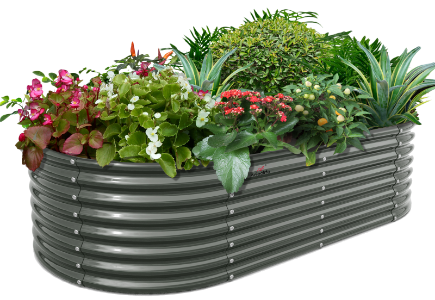Urban gardening has gained immense popularity in recent years, as more individuals seek to cultivate their own food in limited spaces. One of the most effective methods for achieving this is through the use of raised garden beds. These structures not only enhance the aesthetic appeal of your garden but also offer numerous practical benefits.

What is a Raised Garden Bed?
A raised garden bed is essentially a garden bed that is elevated above the surrounding soil. Typically constructed from materials such as wood, metal, or stone, these beds can be filled with high-quality soil, providing an ideal environment for plants to thrive. But why should urban gardeners consider this method?
Enhanced Soil Quality
One of the primary advantages of using a raised garden bed is the ability to control soil quality. Urban soil can often be contaminated or lacking in nutrients. By creating a raised bed, gardeners can fill it with a custom soil mix that is rich in organic matter. This not only promotes healthy plant growth but also improves drainage and aeration.
Improved Accessibility
Accessibility is another significant benefit of raised garden beds. For individuals with mobility challenges, bending down to garden can be difficult. Raised beds can be constructed at a height that allows for easier access, making gardening more inclusive. Additionally, they can be designed to accommodate wheelchair users, ensuring that everyone can enjoy the benefits of gardening.
Effective Pest and Weed Management
Managing pests and weeds can be a daunting task for any gardener. However, raised garden beds can help mitigate these issues. The elevation of the bed makes it more challenging for certain pests to reach your plants. Furthermore, the controlled environment allows for better weed management, as gardeners can more easily identify and remove unwanted plants.
Space Optimization
In urban settings, space is often at a premium. Raised garden beds allow for efficient use of limited space. They can be placed in backyards, balconies, or even rooftops, maximizing the area available for gardening. By utilizing vertical gardening techniques alongside raised beds, urban gardeners can grow a variety of plants in a compact area.
Getting Started with Raised Garden Beds
If you are considering starting your own raised garden bed, here are some steps to guide you:
- Choose a suitable location with adequate sunlight.
- Select the materials for your raised bed, such as wood or metal.
- Determine the dimensions based on your available space.
- Fill the bed with a quality soil mix.
- Plant your desired vegetables or flowers.
For those looking for durable options, consider exploring that can withstand the elements and provide long-lasting use.
Conclusion
In summary, the use of raised garden beds in urban gardening offers numerous benefits, including enhanced soil quality, improved accessibility, effective pest management, and optimized space usage. By incorporating these structures into your gardening practices, you can create a thriving garden that not only beautifies your surroundings but also contributes to a sustainable lifestyle. So, why not consider a raised garden bed for your next gardening project?














